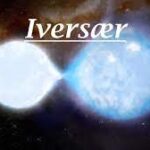
Understanding Diopter Chart:
A diopter chart is the unit of measurement used for an eye prescription. The focus strength of your glasses is measured in diopters.
In other words, diopters measure how powerful your eye prescription is. A higher prescription will have larger numbers and a low prescription will have low numbers.
power of lenses given in meters
Snellen chart is another word to identify a diopter chart that shows the ability to perceive an individual from a specific distance. According to its basic principle, it contains text in charts that shows different ranges of sizes. The chart shows different strengths of measurements.
Hierarchy of Visual Acuity:
The chart is a visual acuity of lines that comprises letters, symbols, and numbers. These letters give us a summary of visual sharpness. The chart starts with a larger number on top and descends to more tiny forms.
Expressing Distance:
A standard distance of 20 feet or 6 meters is used to view the chart. So, an individual with normal vision can easily convert characters from a distance.
Visual Acuity Expression:
The outcome of visual expression is quantified by a fraction. The Numerator signifies the viewing distance, while the denominator tells us the distance with flawless vision would decipher a specific line.
Beyond the Diopter Chart’s surface:
In the World of optical precision, the diopter chart stands as a silent storyteller which comes under the breath of visual acuity and bending of light rays. Let’s see deeper into the World of Diopter Chart and we can say it is the cornerstone of Ophthalmology.
Changing Internationally:
That’s very interesting that not all countries use the same diopter chart design. Snellen chart is prevalent and all countries use their own-made diopter charts. Many countries use their charts according to the culture of their population.
Visual Acuity and Every Day’s Life:
The diopter chart’s implications are way beyond clinical settings. Visual Acuity plays a magnificent role in many daily activities from reading road signs and recognizing faces from a distance. Understanding one’s visual acuity helps make informed decisions about corrective lenses, ensuring his safety and enhancing his quality of life.
Character Design:
The character design on the diopter chart is rooted in scientific understanding. The characters often adopt letters or symbols from the Roman alphabet. These alphabets have been carefully designed to be recognizable at a distance. Even if one is not familiar with characters, it’s still possible to measure with a chart accurately for him/her.
Psychophysical Test:
Diopter charts are an example of Psychophysical testing. It explores the relationship between the characters on the chart. Psychophysics has enabled researchers to investigate the details of visual perception.
Wavefront:
Diopter charts do some measuring errors too like myopia and hyperopia and sometimes, doesn’t capture the eye’s optical system. Wavefront aberrations deviate from ideal optical performance and don’t just do spherical errors but also do some high abbreviations errors that influence visual quality. Modern diagnostic tools have expanded our understanding of vision.
Amblyopia Beyond:
Diopter charts are essential for diagnostic conditions like Amblyopia known as LAZY EYE. Amblyopia occurs due to development issues in the brain’s visual processing. Here, Diopter charts play a vital role and identify weaker eyes and guide treatment.
Precision:
Precision-measured by Diopter charts are outstanding. Each Diopter corresponds to a specific lens power that corrects errors. It gives accurate light to the retina. The diopter chart corrects the lens strengths of every individual separately.
Beyond Correction:
Diopter charts illuminate the World of vision enhancement. Contact lenses and intraocular lenses for cataract surgery is dependent on diopter charts.
Origins and History:
The Diopter Charts owes its origins to the work of Hermann Snellen in the mid of 19th century. Snellen needed a method to assess visual acuity. Then he made his charts and they suit different Countries’ languages.
Neuroplasticity:
In neuroplasticity, the brain forms and recognizes the synoptic connections. Diopter chart gives the full support in the treatment of this disease. It also makes weaker eyes to stronger ones.
Conclusion:
Optical science lives beneath the science of diopter charts. Neurological connections and innovative technologies also move around these charts.
Famous Diopter Chart Companies:
Here are numerous companies that make ophthalmic medicine which include eye drops, tablets, and diopter charts…. You can see some famous companies below:






